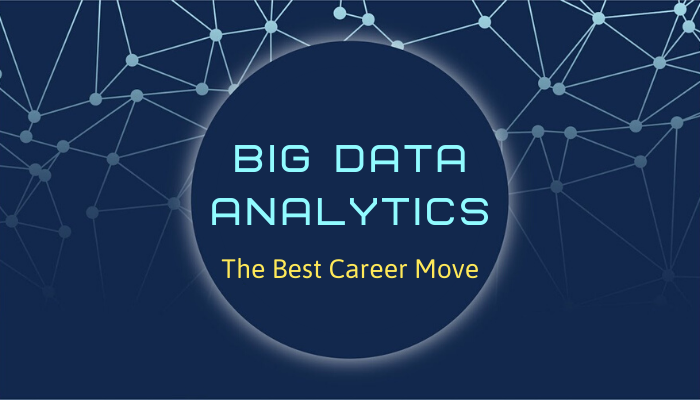In this epoch of big data analytics, companies are frequently looking for professionals who can examine data and obtain smart and swift business decisions efficiently. Possibly, by 2020, the number of jobs for data professionals will increase multi-fold globally.
Statistics can be interpreted broadly as the study of the collection, analysis, discussion, presentation, and organization of data. Therefore, it becomes imperative that data scientists require to know statistics. Many statistical theories like regression, Bayesian analyses, etc. are essential for big data analytics.
Data Science can be regarded as an umbrella term that includes data analytics, data mining, machine learning, and various other related disciplines. Data has to be ordered out, arranged, and prepared for analysis before it can be used, as it would have been collected from different sources. Tools like machine learning, predictive analytics, view analysis, etc., are used to gather critical information from the available data.
Analyzing Complex Data
Data Science requires understanding it from a business point of view and provides accurate predictions and understanding and will be responsible for collecting, analyzing, and interpreting extensive, aggregate data collections by leveraging both machine learning and predictive analysis.
Data Analysis is the art of assembling and analyzing data so it can make better decisions in different fields. A data analyst is a highly trained professional who makes the analysis, using mathematical calculations and estimates risks by using statistical information.
The significant difference between a data scientist and data analyst is that the former is required to forecast the expectation based on past patterns, while the latter derives meaningful insights from various data sources.
Artificial intelligence is intrinsically data-driven, including the application of mathematical ideas through human-machine collaboration. It has many steps like data generation, development of algorithms, evaluation of results, etc. Machine learning, a branch of AI, uses algorithms to learn from data, spot patterns, and catch deep insights as well as forecast future trends using statistical and predictive analysis. Nearly all online portals and websites make use of this to give various recommendations.
Predicting the Outcome
Using various techniques like regression and controlled clustering, machine learning fits within data science. Here, a class of data-driven algorithms predicts certainly different outcomes without any need for specific programming.
There is no doubt that in the future, AI will be a member of most any data-dependent activity. The future is not only about new technology but also about new ways of learning, mainly self-directed learning and problem-solving. But on this journey, there are no shortcuts.
In current years, careers in artificial intelligence and machine learning have grown exponentially to match the needs of digitally transformed industries.
Though there are lots of jobs in data analytics and artificial intelligence, there is a notable shortage of top tech talent with the required skills. Artificial intelligence and a machine learning skill set requirements have grown by over 119% in the last few years.
One who masters the AI and ML skill set can become an artificial intelligence engineer or machine learning engineer who is very sought after and set a good salary.
The Best Career Choice: Big Data Analytics
If you are still not happy with the fact that Big Data Analytics is one of the hottest skills, here are a few reasons for you to see the big picture.
1. Rising Demand for Analytics Professionals
There are more job opportunities in Big Data and Analytics than there was last year, and many IT professionals are made to spend time and money for the training.
The job trend for Big Data Analytics shows that there is a developing trend for it and as a result, there is a constant increase in the number of job opportunities
A bulk of the organizations are in the process of completing it or actively planning to add this point within the next two years.
2. Tremendous Job Opportunities
The requirement for Analytics skills is going up regularly, but there is a significant deficit on the supply side. It is occurring globally and is not limited to any part of geography. In spite of Big Data Analytics is a Hot job, there is still a large number of vacant positions across the globe due to the shortage of required skill.
3. Salary Aspects
Robust demand for Data Analytics skills is boosting the salaries for qualified professionals and making Big Data pay big bucks for the right talent.
4. Adoption of Big Data Analytics Is Growing
New technologies are now making it easier to perform more sophisticated data analytics on vast and diverse datasets. According to the report, more than a third of the respondents are currently using some form of first analytics on Big Data for Business Intelligence, Predictive Analytics, and Data Mining Tasks.
With Big Data Analytics providing an advantage over the competition, the rate of implementation of the essential Analytics tools has increased exponentially.
5. Many Choices in Job Titles and Type of Analytics
From a career point of view, there are so many options available in terms of the field as well as the quality of the job.
Since Analytics is utilized in various areas, there are many job titles for one to choose from.
- Big Data Analytics Architect
- Big Data Engineer
- Big Data Solution Architect
- Big Data Analyst
- Analytics Associate
- Business Intelligence and Analytics Consultant
- Metrics and Analytics Specialist
Big Data Analytics career is profound, and one can choose from the three types of data analytics depending on the Big Data environment.
- Prescriptive Analytics
- Predictive Analytics
- Descriptive Analytics
Conclusion
These days, to leverage the advantage of cutting-edge big data analytics technologies, businesses want to understand that they cannot only depend on the traditional data warehouse. As technology grows, many highly advanced applications would materialize along with new data types and data experts, at that time it becomes essential for the businesses to be prepared for the unexpected future by keeping an eye on the big data analytics trends.



